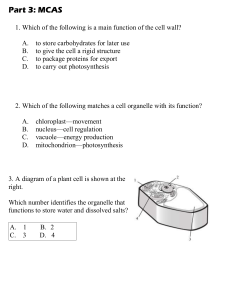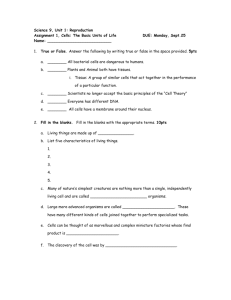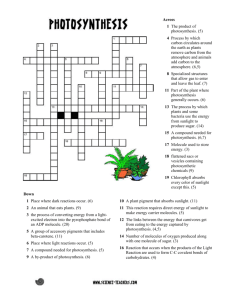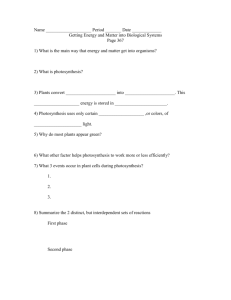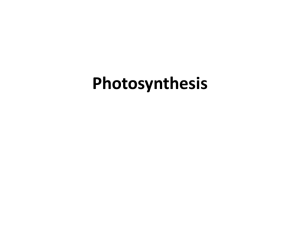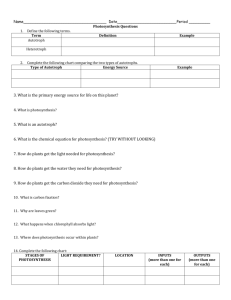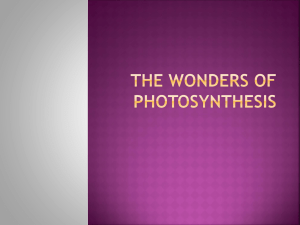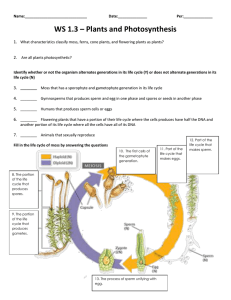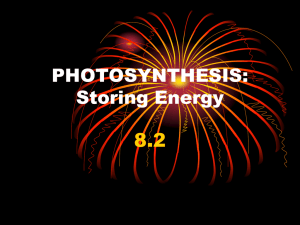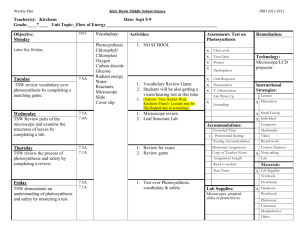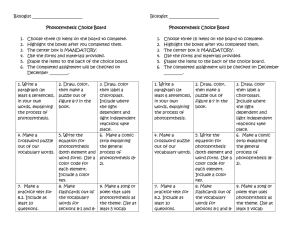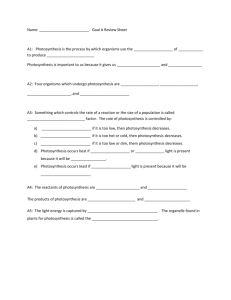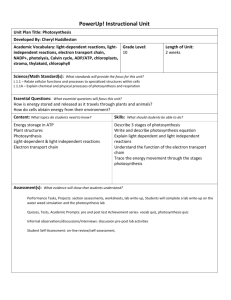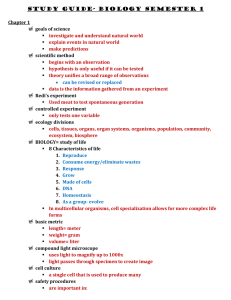Biology: Cell revision Cell theory states • All living thins are made up
advertisement
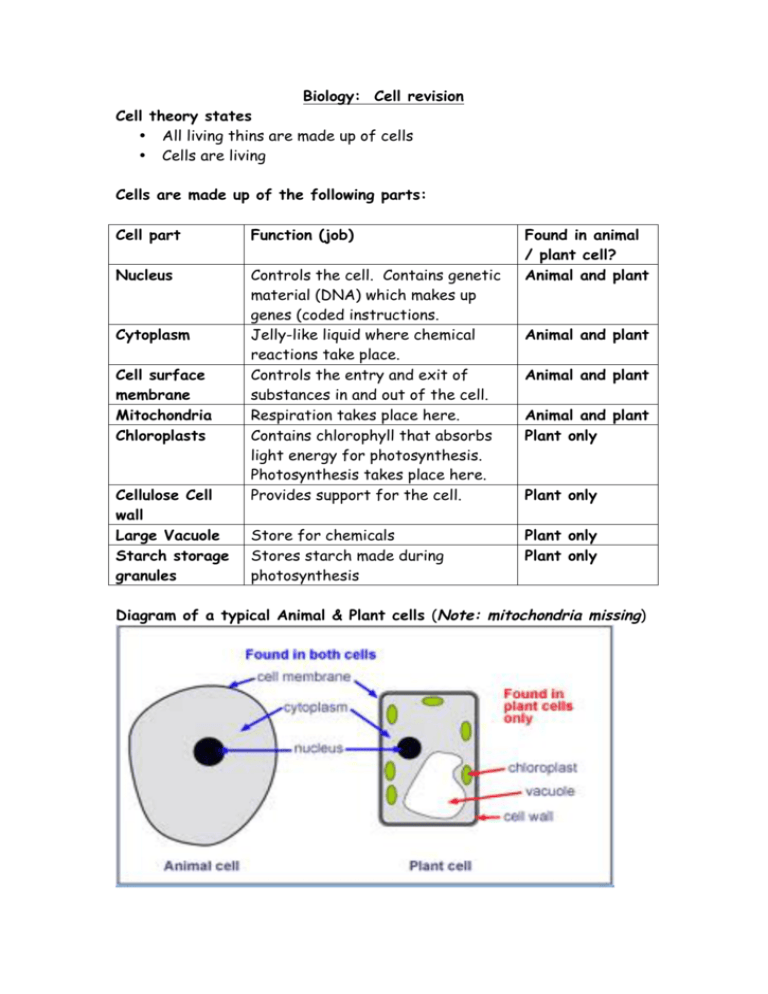
Biology: Cell revision Cell theory states • All living thins are made up of cells • Cells are living Cells are made up of the following parts: Cell part Function (job) Nucleus Controls the cell. Contains genetic material (DNA) which makes up genes (coded instructions. Jelly-like liquid where chemical reactions take place. Controls the entry and exit of substances in and out of the cell. Respiration takes place here. Contains chlorophyll that absorbs light energy for photosynthesis. Photosynthesis takes place here. Provides support for the cell. Cytoplasm Cell surface membrane Mitochondria Chloroplasts Cellulose Cell wall Large Vacuole Starch storage granules Store for chemicals Stores starch made during photosynthesis Found in animal / plant cell? Animal and plant Animal and plant Animal and plant Animal and plant Plant only Plant only Plant only Plant only Diagram of a typical Animal & Plant cells (Note: mitochondria missing) Specialised Cells: Cells that are designed to do a specific job. Cell name Red blood cells Ciliated cells (cilia) Nerve cells Leaf (palisade) cells Root hair cells Job (function) Carries oxygen around the body Traps and removes dust from the lungs Carry electrical messengers Absorbs sunlight to help carry out photosynthesis Large surface area to absorb water and minerals. Groups of cells Complicated organisms (like you) are made of billion of cells. • A group of similar cells is called tissue. (e.g. muscle tissue) • A group of similar tissue is called an organ (e.g. heart) • A group of similar organs is called a system (e.g. circulatory system) • A group of systems is called an organism. Cell slide preparation Method 1. Obtain a thin layer of cells (one cell thick). 2. Place layer of cells on to slide. 3. Add drops of stain onto the cell in order to colour the cell (in particularly, the nucleus). • Use iodine solution for plant cells (e.g. onion cells) • Use methylene blue for animal cells (e.g. human cheek cells) 4. Lower a cover slip carefully over the cells – this helps to prevent air bubbles. 5. Place prepared slide onto microscope. 6. View the slide using the low power lens first moving onto higher magnification.
